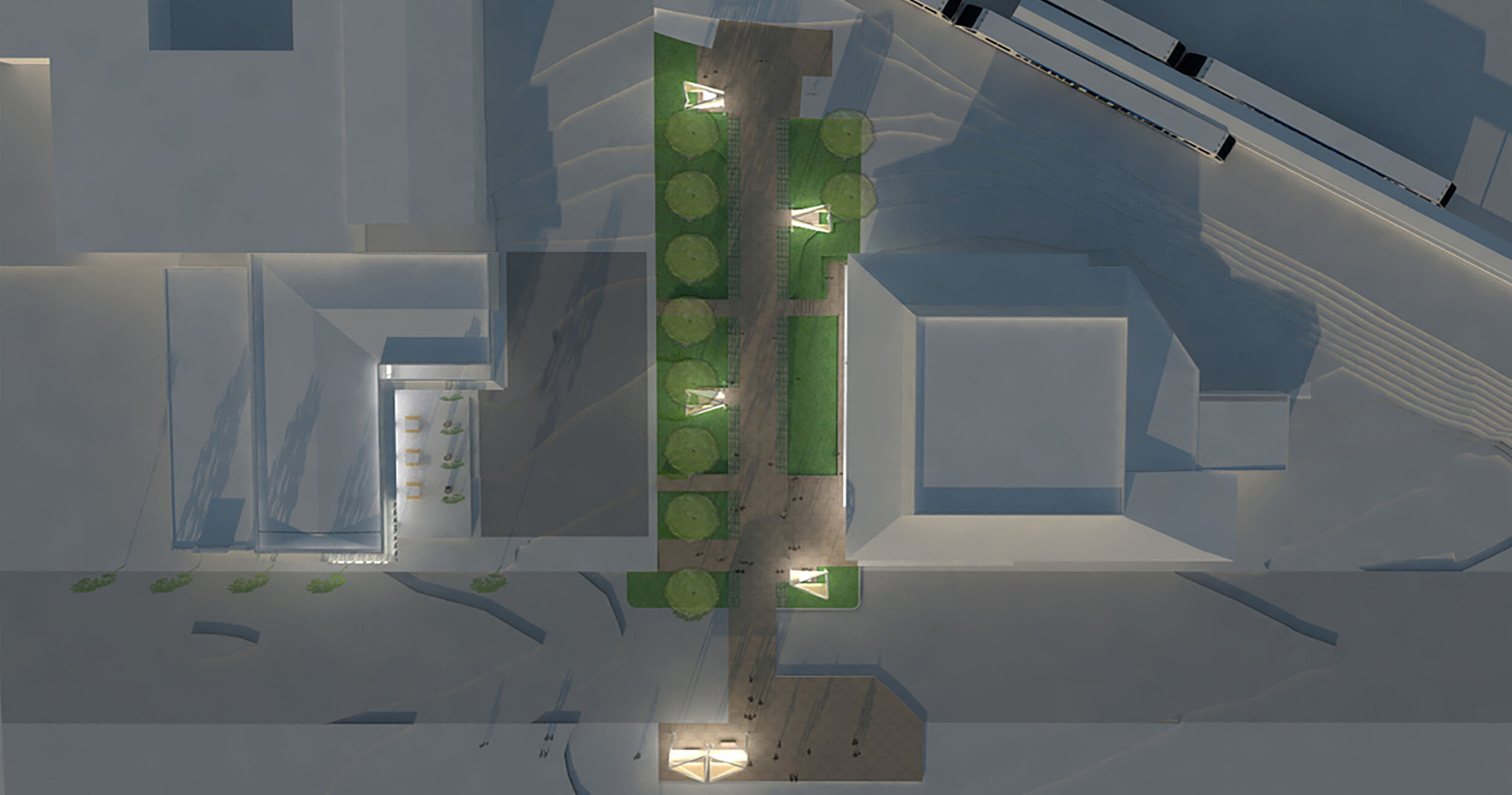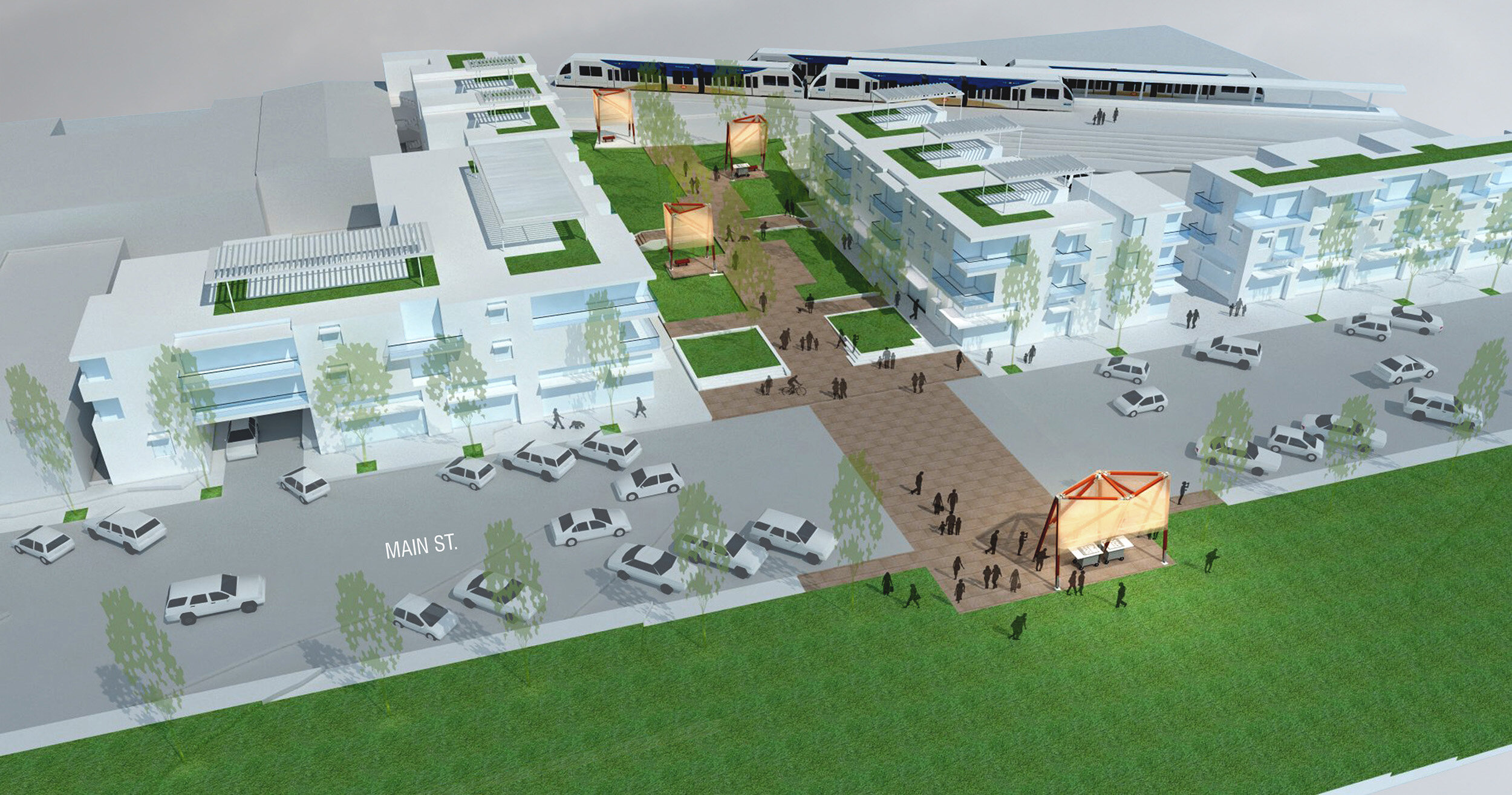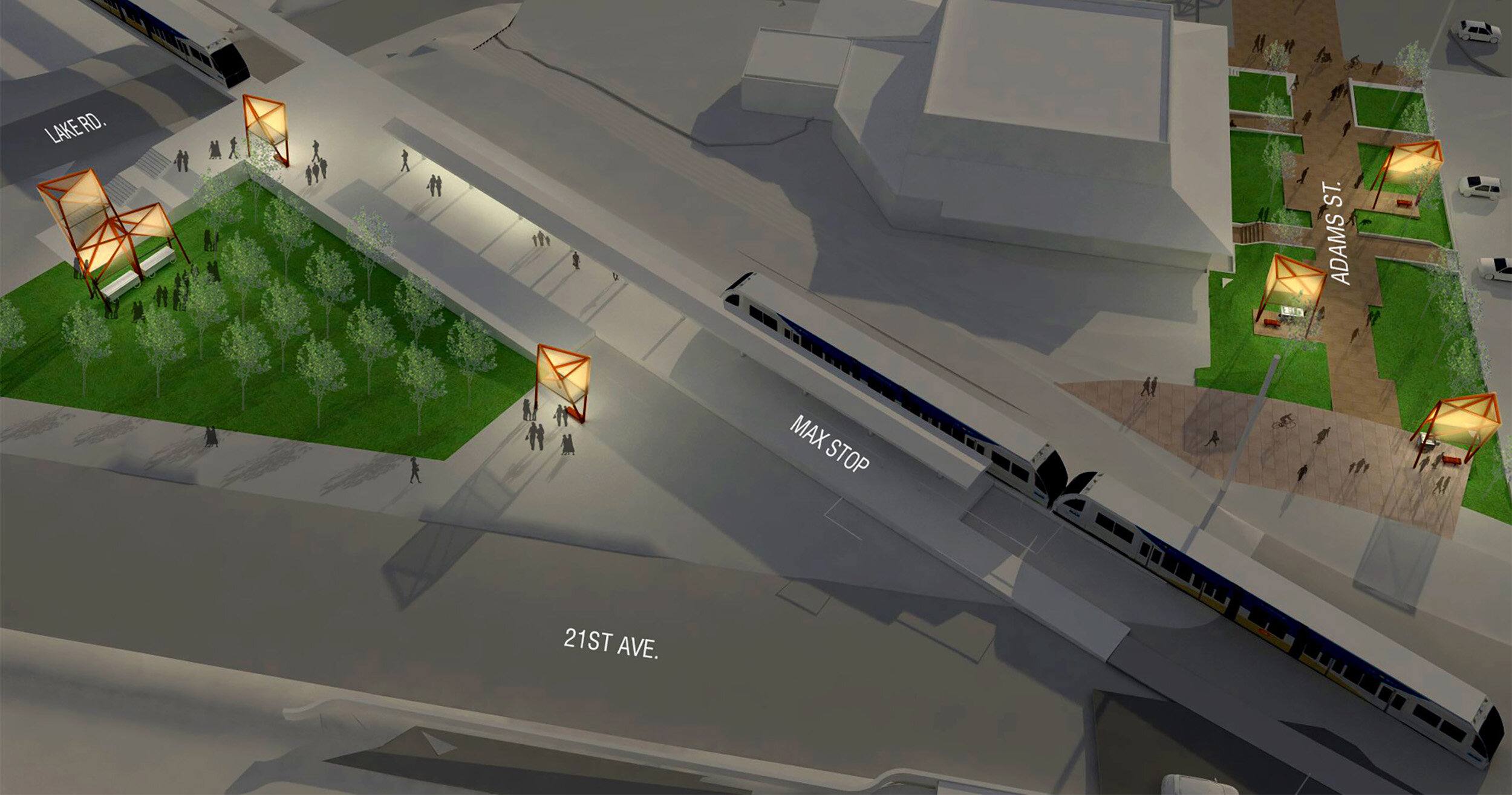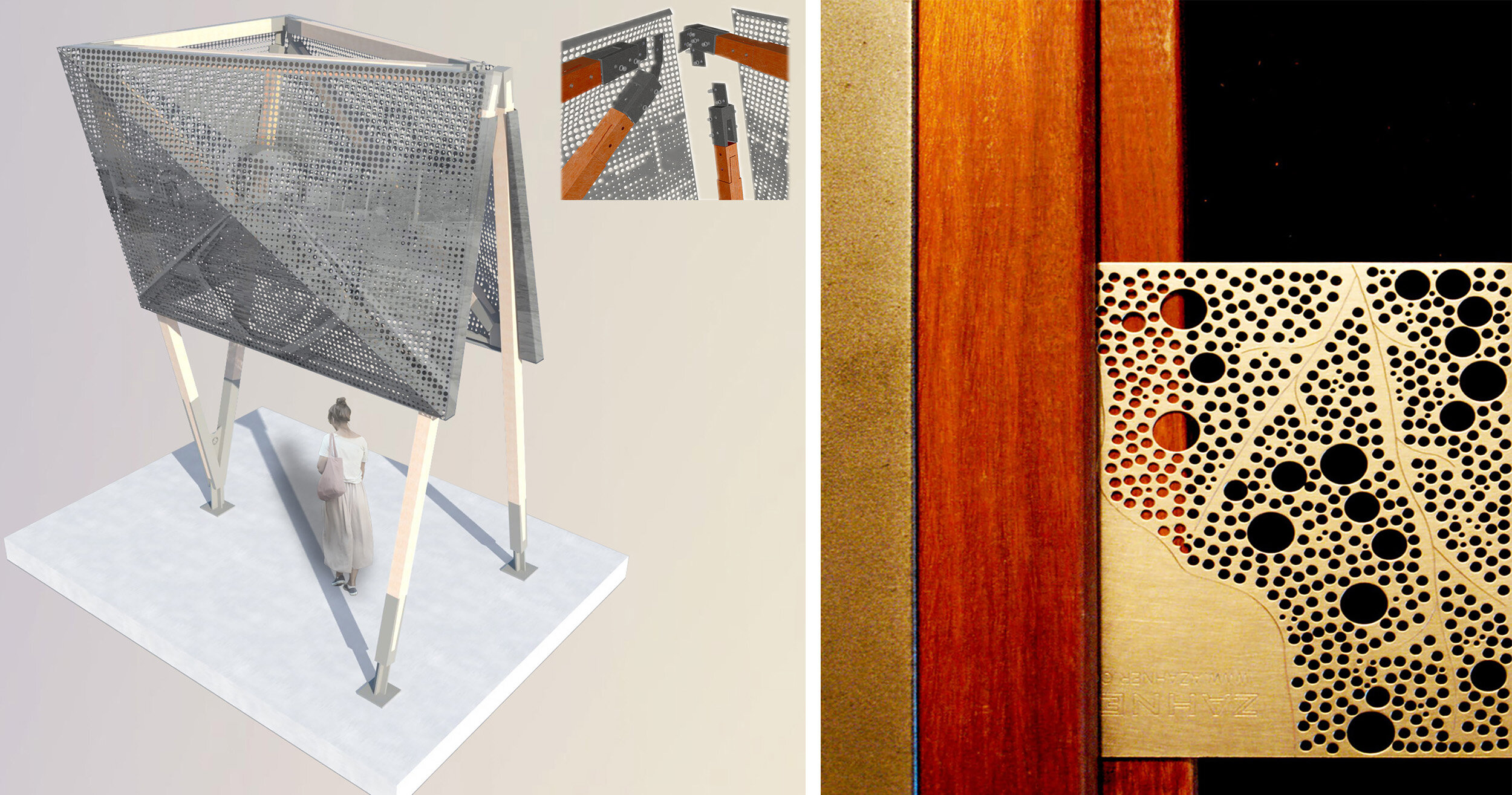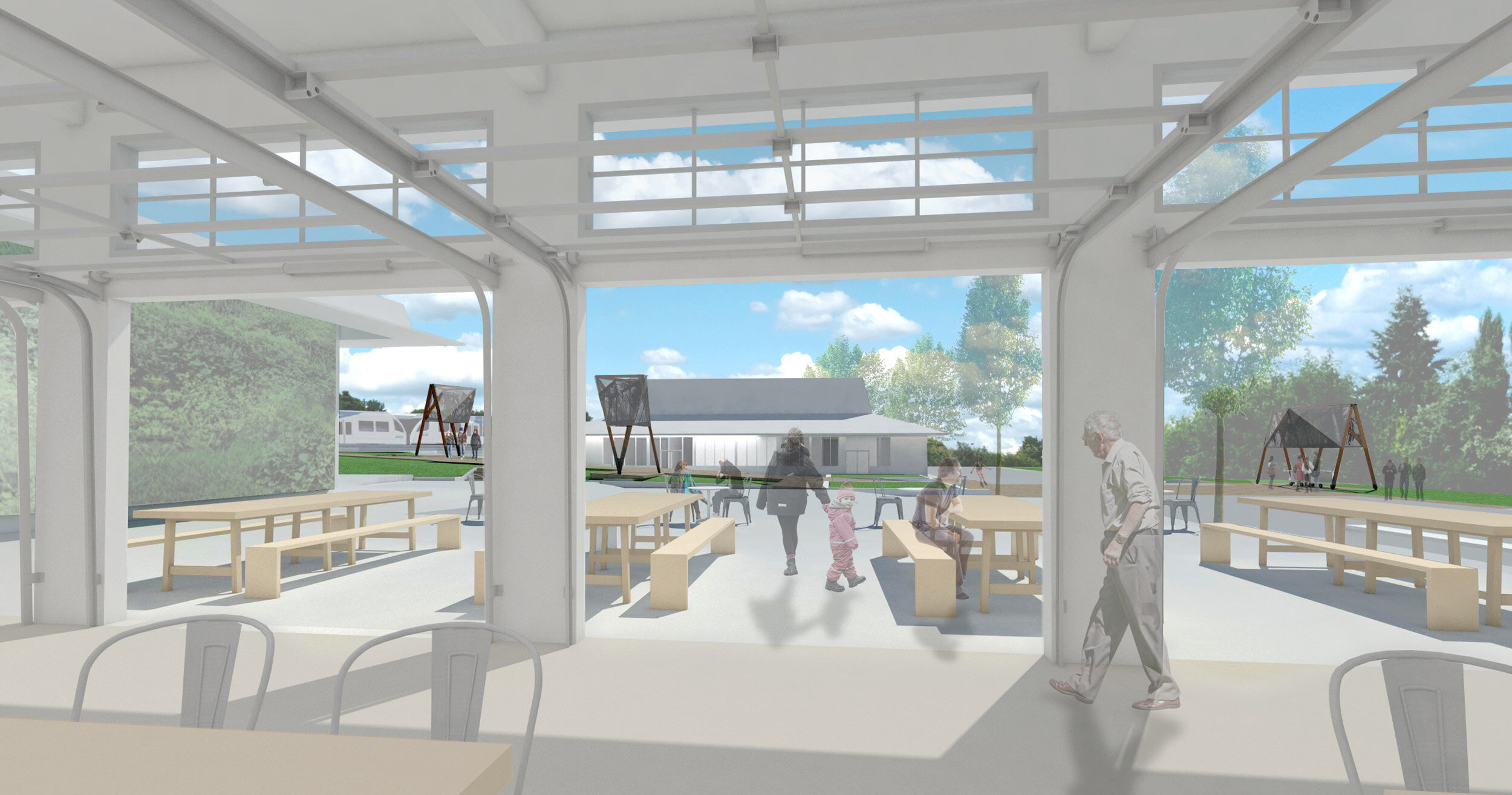Adams Street Pedestrian Connector Lanterns
The town of Milwaukie was founded along the banks of the Willamette River with a history rooted in agriculture, industries, and commerce. The TriMet MAX light rail extension from Portland to the downtown Milwaukie station was critical to revitalizing the downtown core, with the new station connecting to the Main Street shopping district via an improved pedestrian walk. DAO was initially retained by the City and TriMet to create a temporary use concept focused on keeping Adams Street active during construction of the station. An interim pop-up plaza with temporary pavilions was envisioned as a community-programmed public space. Interest around this concept enticed additional funding and a permanent pedestrian connector became the program, activated by more permanent versions of the pavilions.
Four lantern structures flank the Adams Street walkway, culminating in a larger beacon on the west side of Main Street, within Dogwood Park. The lanterns serve as visual markers locating the station, while providing places to focus and occupy within the open space. The form of the structures is derived from the local timber history, nearby heavy-rail trestle, and other bridge precedents. The 9’ x 12’, 18’ high pavilions are formed of 6x6 ipe timbers, with cast end cap components and stainless steel perforated panel cladding. LED lighting is integrally located to back-light the panels and provide pathway illumination at night.
Guided by a community online survey of city heritage and values, perforations of each folded panel create patterns abstracted from historic photos recalling Milwaukie’s themes of agriculture, industry, and the river. The material palette, detailing, and imagery pay homage to Milwaukie’s essence and the aesthetics of hand-crafted tools. The pavilions are flexibly outfitted, accommodating seating benches and food carts, while supporting event banners and lighting. The lanterns are carefully placed within the connector’s topography and hardscape to maximize and focus pedestrian activities while enhancing framed views to the Willamette River beyond.

